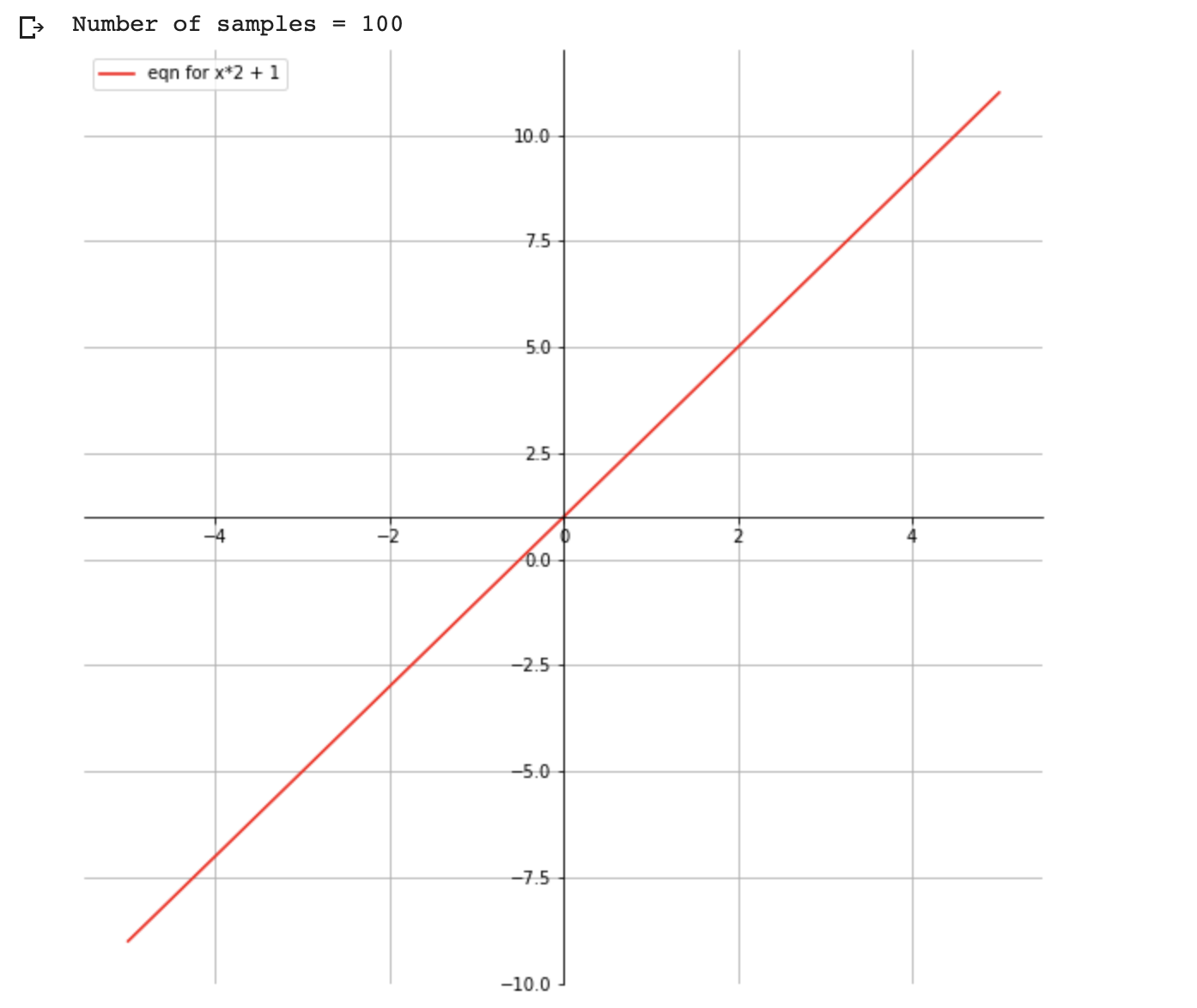3. ML Models
Simple model
\( y = mx + b \)
where
m = slope (gradient)
b = y-intercept
x is the independent variable
y is the dependent variable depends on m and b
Plotting the equation
\( y = x*2 + 1 \)

import matplotlib.pyplot as plt
import numpy as np
# setup the plot size 10 inches by 10 inches
fig = plt.figure(figsize=(10,10))
# 1 row, 1 col, and index is 1
ax = fig.add_subplot(111)
# put grid in the plot
plt.grid()
# let us generate x values start from -5 to 5 with 100 samples
x = np.linspace(-5,5,100)
print ('Number of samples = {}' .format(len(x)))
ax.spines['left'].set_position('center')
ax.spines['bottom'].set_position('center')
ax.spines['right'].set_color('none')
ax.spines['top'].set_color('none')
# we need ticks at bottom and left
ax.xaxis.set_ticks_position('bottom')
ax.yaxis.set_ticks_position('left')
## our plot function
def plot_eqn(eqn, color, label):
plt.plot(x, eqn, color, label=label)
# put legend at upper left cornor
plt.legend(loc='upper left')
plot_eqn( x*2 + 1, '-r', 'eqn for x*2 + 1')
#plot_eqn( x*2 - 1, '-b', 'eqn for x*2 - 1')
#plot_eqn( x*2 - 3, ':b', 'eqn for x*2 - 3')
#plot_eqn( x*2 + 3, '--m', 'eqn for x*2 + 3')
## show our plot
plt.show()
What happens when we train a ML model for this equation?
- We provide a training dataset with values for x and y
| x | y |
|---|---|
| 2 | 5 |
| 1 | 3 |
| 7 | 15 |
| ... | ... |
- During the training ML Model calculates the optimum value for m and b variables based on the training dataset we have provided
- Once training completed, ML model is ready for predicting value for y for the given x
You: Hey, model my x value is 2, can you predict the value of y?
Model: Sure, it is 5